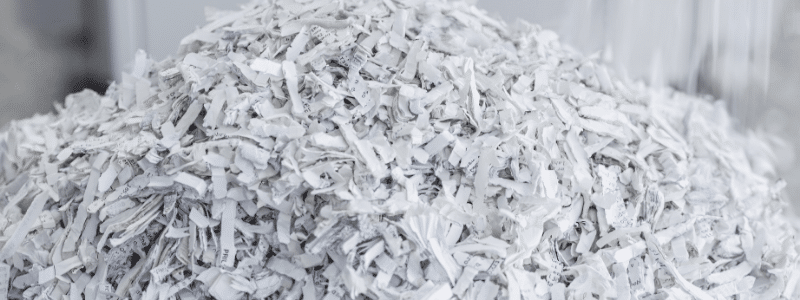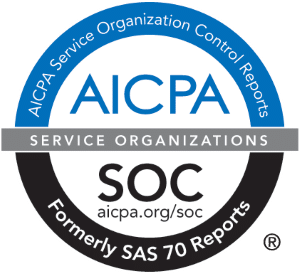Shredding Services Buying Guide

After more than one hundred years in the business of helping clients store, manage and protect their information, Vanguard Archives has developed a deep understanding of our clients, our competitors and the industry we operate in.
Oftentimes our clients or prospects will ask us questions about our industry and about what separates us from our competitors. This Shredding Services Buyers Guide is intended to help buyers of our services better understand how our business works and what types of things they might want to look for when selecting a vendor.
External Risks
Your corporate information can be compromised if not disposed of properly and in a timely manner. Businesses are targets for identity theft and fraud due to the volume of financial, medical and personal data handled on a daily basis. It’s not uncommon for dishonest individuals to target corporate offices in an attempt to take advantage of negligent or improper information disposal practices.
Internal Risks
Dishonest or negligent employees may have easy access to sensitive information stored in your office. Unless paper records are kept safe and securely destroyed at the end of their retention periods, they are vulnerable to theft or simply being tossed—whole and readable—into a recycle bin to save time. Since these paper documents often contain sensitive, confidential information, it’s crucial that you protect your clients and your company with a proper document destruction process.
What is the potential impact of a privacy breach on my business?
Unauthorized access to confidential information can have widespread effects on your organization. The cost of notifying customers of an information breach can be financially devastating, and worse, the damage to your business reputation may be permanent. If your company fails to fully comply with privacy protection regulations detailed in laws such as HIPAA, FACTA and SOX, you may also face fines and legal action.
How do I assess if my company’s information is at risk?
Holding on to sensitive information longer than necessary compounds privacy breach risks for your company, so you must determine if your documents are actually being destroyed at the end of required retention periods. Some expired files sit in boxes for years without being shredded, increasing your risk of a breach. Destruction dates should be scheduled for all stored documents. It’s wise to find out where shredded material ends up after it has been destroyed. Often, bags of shredded material are simply tossed in a dumpster where both thieves and competitors could potentially haul them away and attempt to reconstruct them. A professional shredding and destruction provider can not only perform the service for you; they can also assess your company’s document disposal vulnerabilities help you build an appropriate information destruction policy.
You can use a paper shredding machine to dispose of documents, but there is no guarantee that your information will be destroyed thoroughly, securely and in a timely manner. In contrast, professional document shredding offers a structured process for destroying paper records, and can provide you with Certificates of Destruction. There are multiple benefits to using an outsourced solution:
Security
There are a number of security risks associated with using a paper shredding machine. Because they are slow and unreliable, employees often leave documents piled up in unsecured areas to await shredding. These documents have ceased to be useful to business operations and are now a liability. However, using a professional shredding service ensures regular disposal of sensitive information, and because secure chain of custody procedures are followed, privacy protection is maintained throughout the destruction process.
Efficiency
The average paper shredding machine can handle a maximum of 20 sheets of paper at a time. This means that large files have to be separated into easily shredded portions. Folders, staples, paper clips and sticky notes must be removed before shredding, and paper jams are common. After shredding, the collection bin must be emptied. All of these tedious steps make in-house shredding inefficient, consuming valuable employee time and getting in the way of important, revenue-generating tasks. A professional shredding service offers efficiency and reduces your costs by greatly reducing the amount of employee time required for document disposal. Secure collection bins and consoles are placed throughout your office so whole files can be quickly dropped inside. Rather than standing over a shredding machine, your employees can now spend their time on the important work that keeps your company profitable.
Cost
Even after initial purchase, paper shredding machines are expensive to use. Over time, the electricity, labor and equipment maintenance and replacement costs begin to add up. But a professional paper shredding service eliminates the capital expenditures and overhead costs required for maintaining an in-house shredding program. First, secure disposal bins and consoles are placed free of charge within your office. Then, all material is collected on a schedule that works for your business and shredded by a professional technician, eliminating employee costs. And because a professional shredding service follows regimented, efficient processes, shredding at an industrial level, the cost savings are passed on to you.
A professional shredding and destruction service is an economical solution for reducing the risk of identity theft and fraud to your business. You can choose from on-site and off-site shredding options, and the cost of either service is based on a variety of factors:
Type and frequency of service
Whether you choose on-site or off-site shredding, pricing is based on the frequency of service.
Volume of material shredded
Your shredding and destruction provider will determine the exact volume of material destroyed during each service and calculate your cost by either the weight of paper shredded or the number of boxes/containers collected.
Type of information shredded
Professional shredding and destruction costs are also calculated by the type of information destroyed. Documents are shredded to a small particle size using an industrial-grade paper shredder. But because digital media must be reduced to an even smaller particle size using heavy-duty equipment capable of shredding multiple layers of metal at once, digital media destruction is typically priced higher than document shredding.
Not all shredding providers are created equal. When selecting a shredding and destruction service, it’s a good idea to meet with two or three vendors. Here are some criteria you may want to consider prior to making a final decision:
Shredding options
In order to meet your company’s regulatory compliance, privacy protection and budget requirements, you should have several shredding options to choose from. Off-site shredding enables your documents to be securely collected and discreetly destroyed in a shredding plant, away from your business premises. On-site shredding allows sensitive records to be efficiently and securely destroyed at your facility while you witness the destruction process. A media destruction service is perfect for those data tapes, hard drives and other sensitive media that must be thoroughly and securely destroyed.
Company stability
You should always verify the experience and reputation of your shredding provider. Find out how long your vendor has been operating within your community. Also, since your shredding provider will be handling your company’s most sensitive information, you’ll want to verify that they are financially stable and have the ability to meet your long-term shredding and destruction needs.
Service quality and responsiveness
Locally-based shredding and destruction companies have a vested interest in providing exceptional customer service for their clients. Private shredding vendors are often run by owners and managers who are active in their community and heavily involved in the day-to-day operations of their company. This allows you to speak directly with a company decision-maker who has intimate knowledge of your account and can address your needs quickly.
A uniformed, screened and bonded employee collects the material in your secure containers and either destroys it on-site in a mobile shredding truck or transports it in a GPS-tracked vehicle to a secure shredding plant. Strict chain of custody procedures are followed during this process, from collection to transportation to destruction. You receive a Certificate of Destruction indicating the time and date of destruction at the completion of each service. This certificate provides documentation that your information has been securely destroyed.
Corporate recycling initiatives play a huge role in contributing to healthier planet. Unfortunately, in-house recycling programs can increase privacy breach risks. Motivated by the push for green practices, or a desire to avoid the frustrating shredding machine, employees may inadvertently toss confidential documents in recycling bins rather than shred them. Paper recycling companies do not offer secure destruction of your confidential files. Only a professional paper shredding service can ensure both secure destruction of your paper records and recycling of the shredded paper.
How and where does recycling take place?
After destruction, all shredded material is baled and sent to an authorized recycling vendor or directly to a pulp mill. The same security and chain of custody procedures used during shredding are followed during transfer to the pulping mill. The paper pulp is then used to manufacture a wide variety of paper-based business and consumer products.

